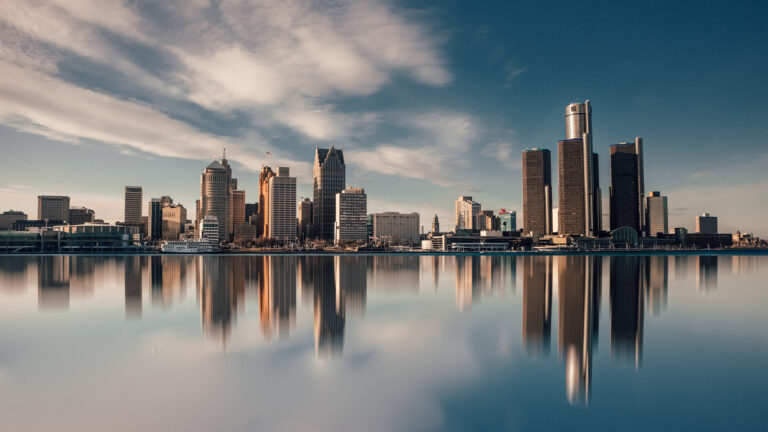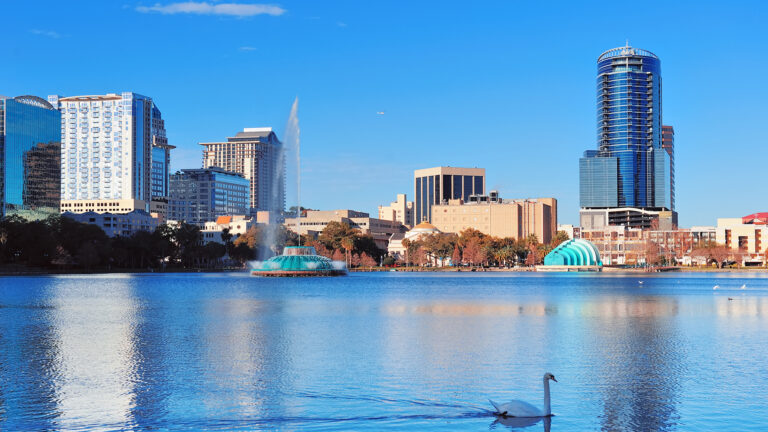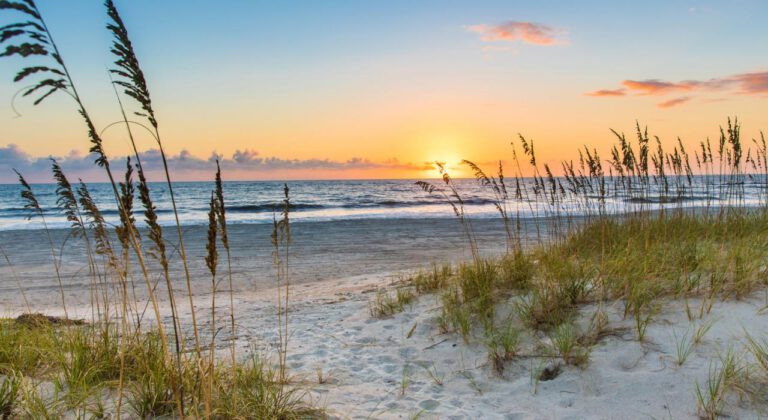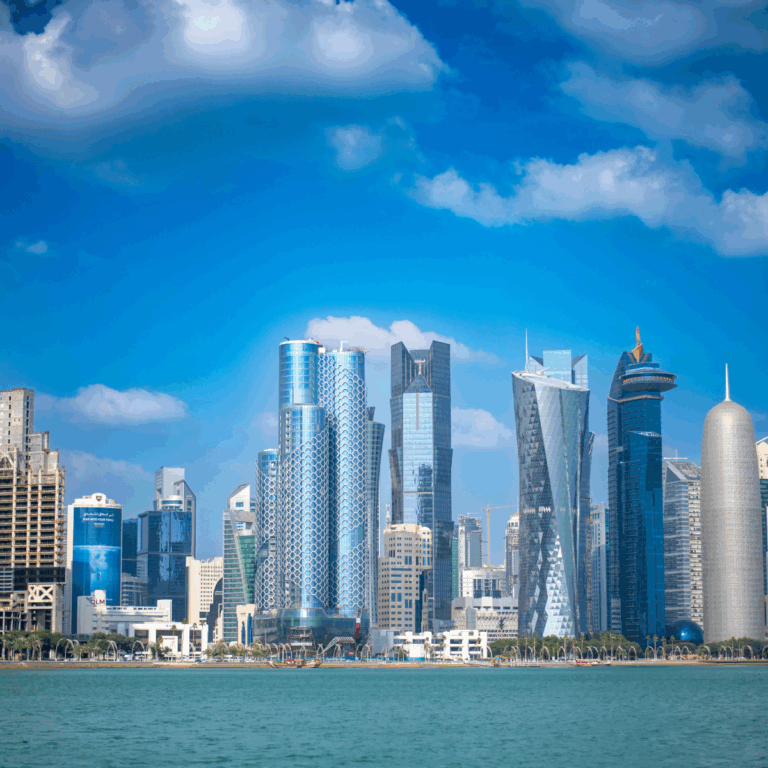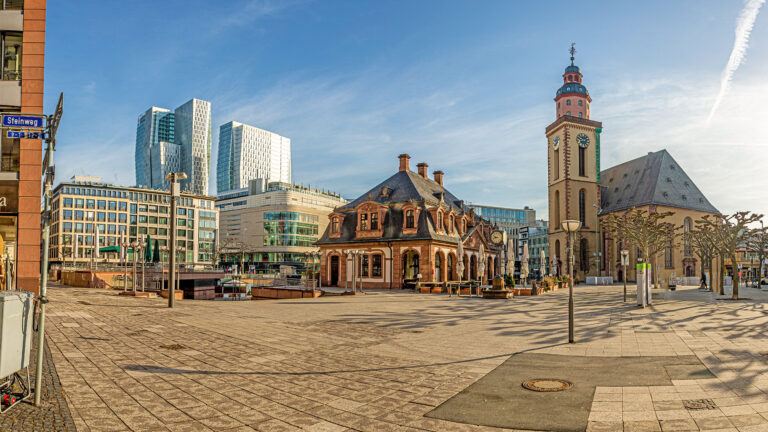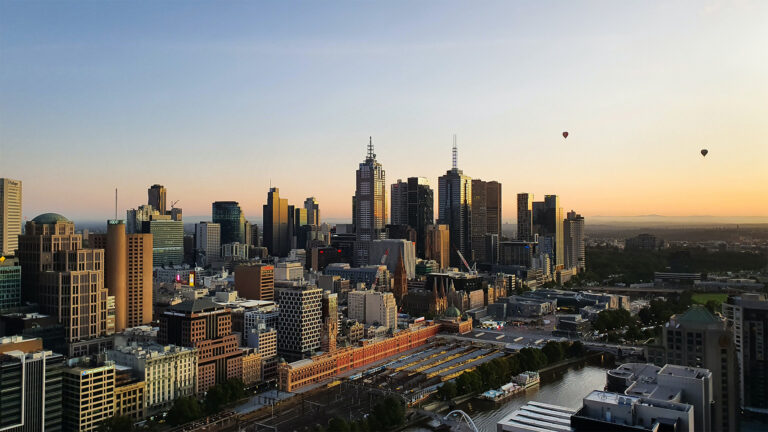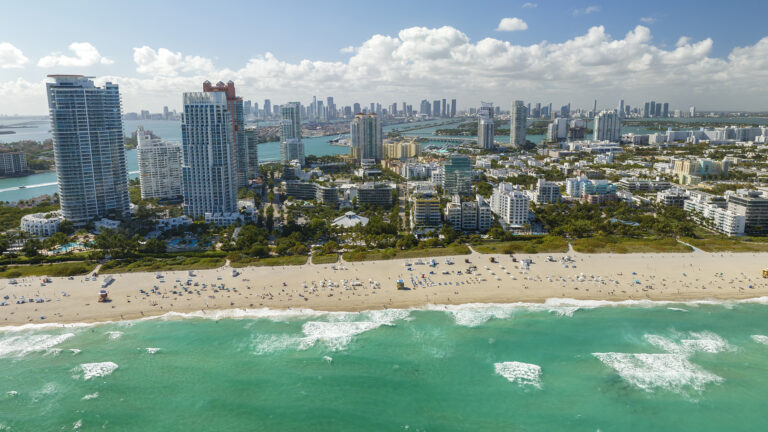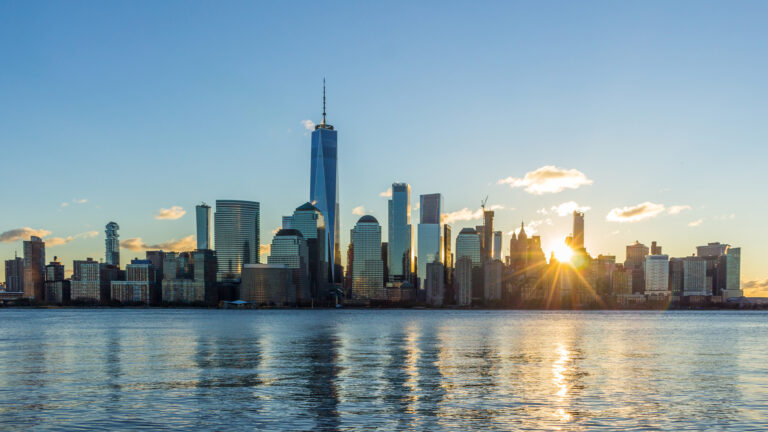Interview Transcript and Video
Christine Giordano: I am here with Vince Smith. He is the chief investment officer of the New Mexico State Investment Council. That’s one of the top three sovereign wealth funds in the United States at $57 billion.
Vince is in a very unusual situation. His inflows are actuallyexceeding his outflows. The question is, what does he plan to do with the extra moneyand how will he solve his top-down macro approach towards this economy? We’lldiscuss what he’s thinking, how he’s considering his managers, what he’s doingwhen finding success with private equity, strategies around that, hisinfrastructure investments, as well as the new strategist position he’s hiringfor. Welcome, Vince.
Vince Smith: Thanks,Christine. Good to be with you.
Giordano: Greatto be with you too. I’d love to start by discussing what your fund does. Howdoes it get its sovereign wealth?
Smith: NewMexico is entirely fortunate for the southeast corner of our state to sit onthe Permian Basin. All total, New Mexico has a little over 13 million acres ofland that we can lease to energy developers. Most of that is leased. A lot ofthat is in the southeast corner of the state there on the Permian. Our landoffice leases land to energy developers, the big ones you recognize,ExxonMobil, et cetera, and receives rents and royalties from those leases.
The state then takes a cut in taxes when the energy leaves the stateand that’s the bulk. Of course, we get other taxes and things from thedevelopers being able to do a business in the state, which come directly to thelegislature, directly to the state. The land office revenues are the biggestportion of that. That comes directly into our fund to be invested. We get thoseinflows. We also get some inflows from the legislature. We’ve got a total of 12permanent funds.
That’s up from four for a long time. The legislature’s set up severalnew funds. We had just starting in about 2021, 2022. We just had a big spike inboth production and price with oil and gas. Our inflows just really jumped. In2022, we received $8 billion in inflows. 2023 was the same, another $8 billion.This year will be $5 billion. Just huge inflows into the fund. We’ve gone from$35 billion to $57 billion here just in the past few years based on inflows andinvestment returns.
Giordano: Incredible.How does that inflows-exceeding-the-outflows situation influenceyour fund? What does that mean for your fund?
Smith: It’svery meaningful. In fact, we expect it to continue just not at these levels,but for inflows to match or closely there are outflows, which means ourinvestment earnings get to stay in the portfolio and compound. It’s a reallygreat thing for the portfolio, the magic of compound interest. We’ve all heardthat before. That’s exactly what’s happening in our portfolio right now.
Giordano: Whatare you doing or planning to do with all the extra money? Sounds like a funposition to be in.
Smith: Well,we target with our growth funds, which receive most of the money. We targetabout 55% private markets. It’s really difficult to get the money in. We’ve gotfund managers do our due diligence, sign our contracts, and wait for capital tobe drawn, usually over a roughly three-year period on the commitment size. It’san extended process to get money into those private markets. We’re finding waysto do it a little bit faster than otherwise we would in just traditionaldrawdown funds. For the most part, it’s difficult.
We’ve really picked up the pace with manager hirings. Our pacing modelwas just blown up. [chuckles] We’re pacing about three times of what we hadbeen previously in terms of trying to get the money invested. We’ve got quite abit of excess cash and bonds on the balance sheet right now. We’re just not bigfans of the equity markets, so it’s difficult to park it there. We’re gettinggood yields on our cash, pretty good yields on our bonds. We’ve decided thatexcess will stay in cash and bonds until we can get it drawn down.
That’s probably a four-year process for us. It could be five, dependingon how fast managers are drawing capital. It’s been a little bit slower thanwe’ve expected, but seems to be picking up a little bit. We’ll have excess cashand bonds unless we get a recession, stock come down. Our stocks come down andwe’re a little more favorable. We can maybe move some money into the publictrade markets. Tell us it’s time. We’ll be sitting on a pile of cash and bonds.
Giordano: Arethere any managers that you’re seeking to hire?
Smith: Ourasset-class directors across the board have private equity, real estate, realreturn, and private credit are just as busy as they can be looking for newstrategies and looking for new managers.
Giordano: You’renot shy from investing in managers who are relatively new compared to some ofthe others on the playing field. What is your philosophy behind that and how doyou make sure that they stay in that high-performance category?
Smith: Ourfirst cut with managers always is quality, but quality’s more than just stay along track record. Our consultants and my asset-class directors have reallysharpened their skills to find managers that maybe have shorter track records,but they’re still able to ferret out quality among those managers.
Giordano: Dothey work with those managers in order to get them to keep performing or whathappens if a new manager hits a rough spot?
Smith: Well,we keep a close eye on everybody. [laughs] Whether you’re on Fund 11 or you’reon Fund 3, we’re watching it just as closely. I’d say we do pay a little bitmore attention to some of our managers that are Fund 2 or 3 or 4, but ourmanagers that are further out and more experienced and longer track recordsstill get a pretty sharp eye on them.
Giordano: Anyred flags that you see or that you watch out for?
Smith: Oh, Idon’t know in particular that there’s particular trip points for us becausethere’s just a lot of factors as managers put money to work and then developparticularly in the private equity space where we’re buying companies andimproving them and then selling. There’s a lot that go wrong and a lot that cango right, so I don’t think there’s anything particular that we’re looking for.
Giordano: You’vebeen finding success within your private equity and your strategies around it.Can you describe your approach there?
Smith: Well,again, we’re looking for quality among managers. We always discuss amongourselves that staying out of trouble means a lot. We don’t have to manageproblems if we don’t take them on. We avoid that by looking for high qualityamong our managers.
Giordano: Youfollow the IMF. You use their data. You really go into the macro in yourinvestment reports. You’re a top-down macro. You have that top-down macroapproach. Can you discuss some of the themes that you’re looking at orinvesting around within this current economy?
Smith: Sure,so I’ve got a strategy group. There’s five of us, so a total of fourstrategists and myself. We spend our days just understanding what’s going on inthe world, economies, banking corporations, what governments are doing, whatcentral banks are doing. We just spend a lot of time on the macro picture. Wetry to develop. We use a seven to 10-year time frame for our investmenthorizon.
It’s long enough to avoid the problems of making shorter-termforecasts, but it’s not so long that trends and themes get wiped out if you’relooking in more than multi-cycle type environment. We think that seven to10-year time frame gives us a good chance to make judgments and allocate ourportfolio toward those. On the IMF, we just start with that as a baseline. Wethink they’re real steady in terms of their forecasts and certainly data-richoperation.
They’ve got a global macro monitor that comes out in April and again inOctober. We’re avid readers of that and we take their work as the baseline.From there, we decide where we think differently in terms of what’s happening.From that, after we develop some themes and trends for seven to 10-year period,we develop our asset allocation from that. We spend an awful lot of time withthe team of five pretty much full-time on macro and getting our assetallocation right and then some portfolio management tasks.
We’re a little more concerned than we have been. We’ve been a littlebit concerned on some of the bigger-picture things. We’ve documented that inour previous annual investment plans. The one that’s coming out next week willbe our 13th annual plan. Again, it’s not just a one-year look at anything.Really, it’s a seven to 10-year period that we just move forward a year as wego.
We still think we’re in a low-growth environment. We think a lot ofthat’s being driven by demographics. We think that demographic problems that wehave in the world today are showing up now and will continue to show up overthe next decade, particularly as we deglobalize a little bit here. It’s goingto start hitting a little bit harder a lot overseas. China and severalindustrial economies like that, Germany, Korea, South Korea, they’ve got someserious demographic issues.
We’re keeping our eye on that. Mainly, low growth. There’s financialand some social problems that we’re becoming more concerned about. The level ofdebt across the board, not just the federal government but also corporationsand consumers, are very highly indebted. It’s foreign governments too that havegotten so highly indebted. Historically, when governments get as indebted as alot of countries are today, about the only way out is inflation.
That’s big on our radar right now that, over time, we’ll see higherrates of inflation. Over the next decade, we’ll see higher rates of inflationthan we did in the previous decade. Nearer term, if we dip into recession, ofcourse, deflation will happen. Over the next 10 years, we’re expecting higherinflation to help deal with some of the debts that we have. We’re seeing levelsof income inequality that are about as high as they get, at least in the past.
Historically, the way those get resolved is, usually, financial marketcollapse. [chuckles] Generally, income equality gets created by good financialmarkets. It takes bad financial markets to help resolve it. That’s justhistorically. We’re not forecasting either massive inflation or a marketcollapse. Historically, that’s how those issues have been resolved. We thinkthere’s some big-picture things out there that stand as challenges.
It does not overcome our optimism that we’re better prepared orwell-prepared for some tougher waters. We’ve really diversified the portfolioover the past several years. Particularly since 2019, we’ve really extended ourdiversification in the portfolio, really generate a lot of cash out of ourinvestments now to provide just more stability to the portfolio because thelessons of the past are pretty clear if you get tougher times.
We’ve got a staff that’s, of course, managed through COVID. That shortdrop, but we’ve got plenty on our staff that managed institutional assets from2008 and 2009. There’s a few of us on staff that managed 2000 to 2003 and one,me, who managed the rough period from ’87 to 1991. We’ve got some experiencedpeople or people who are experienced with rougher markets on our staff.
We feel pretty confident that we’re prepared with a diversifiedportfolio and experienced staff. The other lesson from previous bad times are–well, first lesson is you want to enter these times with a well-diversifiedportfolio and some experience. The second lesson from history is when thingsget rough, you always come out the other side with tremendous opportunities infront of you.
In our annual investment plan, I document previous bad times and thenwhat happened with stocks in particular after that. There are just sometremendous 10, 12, 14-year runs at double-digit returns per year from the stockmarket after some of the rougher times. Enter with a well-diversified portfolioand get ready when it starts to wrap up for some really great opportunities.
Giordano: That’swhy you’re saving cash, bonds, ready to pull the trigger when the opportunity–
Smith: That’swhy we’re more comfortable. That’s why we’re more comfortable with the excessbeing in cash and bonds as opposed to trying to put it in stock market or REITsor other risk assets.
Giordano: Makessense. You also have infrastructure investments. What are your thoughts there?
Smith: We’vereally ramped that portfolio. We’ve really moved money to that whole sector.We’ve got a 12% allocation to real estate and another 12% allocation to realassets, not including real estate. About a quarter of the portfolio is inthings people would recognize as inflation hedges. Infrastructure is a veryimportant portion of that. We’ve really grown that piece of the portfolio alot.
Giordano: Inflationhedges, for one that perhaps is much less experienced than you are, mightinclude– I’ve heard of toll roads, but what else?
Smith: Well,our infrastructure is pretty broadly diversified. Power and energy is a bigcomponent that we’ve really been focused on with a lot of the infrastructureinvestments we’ve done, data centers, and all different types. Not much on tollroads, [chuckles] but big, chunky things that produce cash and have good assetvalue to them. I guess inflation hedge probably is not the right term. It’sjust assets that will do better in an inflationary environment than otherswill.
Giordano: Are youbetting on certain sectors like tech and health care?
Smith: Well,in the tech space, we’ve been doing a lot in the data center area. I thinkwe’ve got three funds there. All with some pretty good-sized commitment levels.The asset-class director, there’s looking for more. We do have quite a bit inthe energy sector, both traditional and renewables in that portfolio. Haven’tquite gone for gold or Bitcoin, but we think about it.
Giordano: Doyou favor any kind of renewable investments? Is it around infrastructure, wind,solar?
Smith: Yes.In the infrastructure portfolio, we have both wind and solar assets.
Giordano: Whatpart of that do you invest in? The distribution part or the downstream,upstream, or–
Smith: Yes.In power, he’s got both distribution or transmission and distribution. In theenergy space, we do have some traditional energy along with the wind and solar.We don’t have a lot of upstream and traditional space mainly because ourinflows are upstream. [chuckles] We’re more midstream and also some MLPs,pipeline-type assets.
Giordano: Youmentioned that you take apart the IMF report and you choose where to agree withit, where to disagree with it. What do you disagree with these days?
Smith: Well,we take it as a baseline. We assume this is what a lot of people are thinkingand then we look for spots that we think a little bit differently. We thinkdeglobalization will probably happen a little more quickly than the IMF does.While we’re in line with their growth scenario, we think the total growth orthank you for the world may be a little bit high for us. A lot of thatdemographics are really going to slow some of the higher growth areas that theypoint out. I would say, overall, probably a little bit lower expectations ongrowth. I think definitely higher expectations for inflation than the IMF waspointing out.
Giordano: Alittle congratulations on becoming one of the Elite 100 this year.
Smith: Oh,thank you. I appreciate you all.
Giordano: Also,a fund leadership award. You’re hiring a strategist or looking for one. Can youdetail that position?
Smith: Yes,so our team was full. We were creating a new position for an operations person.We started to create one for a higher-level person at officer level. We were alittle afraid on the recruiting side. We came down to an ops manager level. Oneof the strategists thought she might want to take the job. We went back to theofficer level and moved her into that. It created an opening on our strategyteam. We spend our time really just following the global economy in a lot ofdifferent ways.
We’ve got a bit of a process that we expect everyone to stick to, butit’s very broad. We’re really looking for somebody who is a big-picturethinker, somebody that’s just intellectually curious about the macro side. It’snot a quantitative job. It’s very much gathering research, helping us developinvestment themes and trends. A certain type of person finds it very, veryinteresting. A lot of other people say, “Boy, I want to go out.”Diligence managers track our investments. We do find people like myself thatjust really love doing it.
Giordano: Whois Vince outside of work? What do you love doing outside of your job?
Smith: [laughs]I’ve got a couple of hobbies. Most of the time, work takes a big portion of mylife. I’m usually thinking or doing, most of the time, something related towork.
Giordano: Oh,wonderful talking with you today. Thank you again. Fun discussion. Lookingforward to seeing you in Santa Fe at the investment conference.
Smith: Yes,great. We’re so appreciative that you all do that here in Santa Fe. It’s such agreat conference for all of our folks.
Giordano: Thankyou. It’s a beautiful place to be. Thanks again, Vince.
Vince Smith will be speaking at the Markets Group 9th Annual Southwest Institutional Forum in Santa Fe Oct. 29-30. Click here for details.
